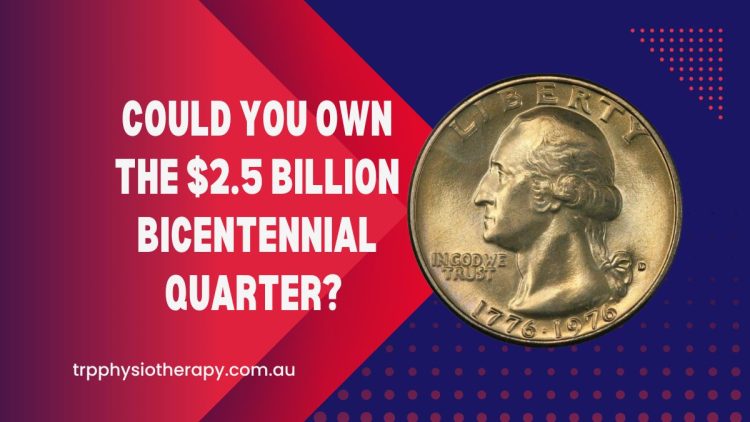Imagine finding a coin in your pocket change that’s worth millions—or even billions. That’s the buzz surrounding the 1976 Bicentennial Quarter, a commemorative coin that has captured the imagination of collectors worldwide.
Some rumors claim that a specific version of this quarter could be worth a staggering $2.5 billion. But how much truth is there to this story, and what makes the Bicentennial Quarter so special?
Let’s dig into the facts, figures, and what you need to know to spot a potentially valuable coin.
What Is the Bicentennial Quarter?
The Bicentennial Quarter was minted in 1975 and 1976 to celebrate the 200th anniversary of America’s independence. Instead of the usual single date, these quarters are marked with “1776–1976” and feature a special drummer boy reverse design.
Key design elements include:
- Obverse: Classic portrait of George Washington.
- Reverse: A Colonial drummer with a torch surrounded by stars.
- Dual-Date: “1776–1976” instead of a single year.
These quarters were released into general circulation, meaning they’re still being used today—yes, even in your change.
Is There Really a $2.5 Billion Quarter?
The eye-popping $2.5 billion valuation has made headlines, but it’s important to separate fantasy from fact. While the Bicentennial Quarter is indeed collectable, there is no confirmed public sale or private transaction for a coin of that value.
However, rare variations, unique errors, and uncirculated specimens can be worth hundreds or even thousands of dollars. So, no billion-dollar quarter confirmed—but some can be worth a small fortune.
Realistic Values of Bicentennial Quarters
Below is a breakdown of realistic current values based on coin type, rarity, and condition:
| Type of Bicentennial Quarter | Estimated Value Range |
|---|---|
| Regular Circulated | $0.25 – $1.50 |
| Uncirculated (Mint State) | $5 – $15 |
| Silver Proof (40% silver content) | $10 – $30 |
| Error Coins (e.g. double die) | $100 – $2,000+ |
| High-Grade Certified MS-67+ | $2,000 – $5,000+ |
Coins with mint errors or those made from 40% silver (from proof or special collector sets) are the most likely to have significant value.
What Makes a Quarter Valuable?
Several characteristics can raise the value of a coin:
- Condition – The better preserved, the more valuable.
- Rarity – Coins with low mintage or rare errors are highly sought after.
- Composition – Silver coins tend to be worth more than copper-nickel ones.
- Certification – Coins graded by agencies like PCGS or NGC can command higher prices.
- Mint Errors – Off-center strikes, doubled dies, or missing elements can dramatically increase value.
How to Identify a Rare Bicentennial Quarter
Here’s what to look for:
- Check the Edge: Silver quarters will have a solid silver-colored edge instead of the copper-nickel sandwich.
- Look for “S” Mint Mark: These were made in San Francisco and often part of silver or proof sets.
- Spot Errors: Use a magnifying glass to look for double die features, off-center strikes, or odd anomalies.
If in doubt, consider having your coin professionally appraised.
Most Valuable Quarters in History
To give context to the rumored billion-dollar quarter, here are some historically valuable U.S. quarters:
| Coin | Notable Value |
|---|---|
| 1796 Draped Bust Quarter | $50,000 – $200,000+ |
| 1932-D Washington Quarter | $100 – $5,000 |
| 1943 Double Die Washington | $1,500 – $10,000+ |
| 1976 Bicentennial Error Coins | $500 – $2,000+ |
No quarter has officially sold for anywhere near $2.5 billion, but these coins still prove how valuable old change can be.
Bicentennial Quarter Facts
| Feature | Details |
|---|---|
| Release Year | 1975–1976 (dual-dated 1776–1976) |
| Design | Drummer Boy reverse |
| Estimated Top Value (Realistic) | Up to $5,000+ (for rare certified types) |
| Circulation | Still found in general circulation |
| Silver Content? | Only in proof sets marked “S” |
So, could you own the “$2.5 billion quarter”? Realistically, probably not. But there’s still a chance you’re holding a valuable rare coin in your change jar. The 1976 Bicentennial Quarter is more than a commemorative token—it’s a slice of history that can be worth more than face value under the right conditions.
If you come across one, take a moment to examine it closely. You never know—you might just strike silver.
FAQs
Is the 1976 Bicentennial Quarter made of silver?
Some are! Only the ones from special collector’s sets (usually with an “S” mint mark) contain 40% silver.
How do I know if my Bicentennial Quarter is valuable?
Look at the coin’s mint mark, condition, composition, and whether it has any errors. Silver and error coins tend to be worth more.
Can I still use Bicentennial Quarters as regular money?
Yes. They are legal tender and worth 25 cents for spending—but don’t spend one without checking its value first!

